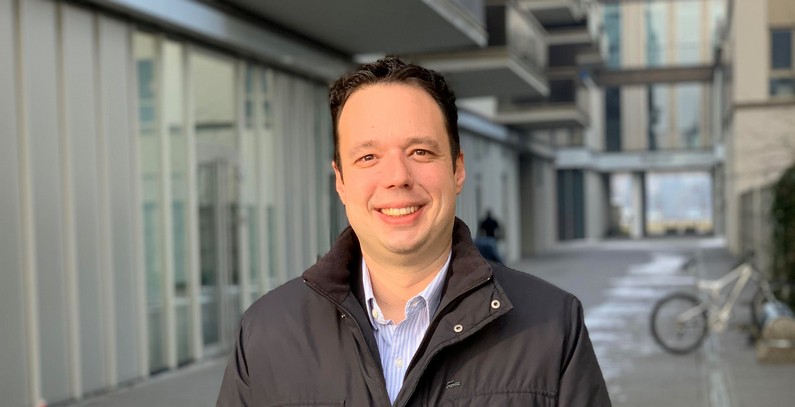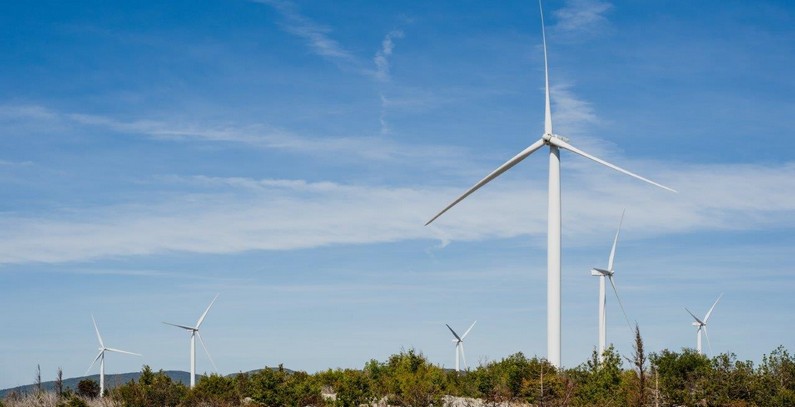
Photo: wpd
Renewable energy projects, especially those concerning small hydropower plants, have not been without controversy in the region, with investors often not acting in good faith. The other side of the coin is that investors that have done everything they were supposed to have often suffered damage over regulatory changes. In this interview, Zoran Obradović, managing director at wpd Adria, discusses these problems from a developer’s point of view.
Proper environmental impact assessment and cooperation with the local community are key to developing renewable energy projects, and if a local community is openly opposed to a project, it is better to look for a different location, Obradović tells Balkan Green Energy News. He also discusses Croatia’s regulatory framework for renewable energy sources and offers proposals for other countries in this part of Europe, while revealing that wpd is eyeing development opportunities across the region.
wpd Adria has invested in four wind farms in Croatia. Can you tell us more about these projects and the company’s possible plans in the wider region?
Exactly, wpd is a German leader in the use of renewable energy sources and we have been present in Croatia for two decades now, through a Dubrovnik-based subsidiary. We have developed four wind farms with a combined installed capacity of over 90 MW. Worldwide, wpd has installed an impressive 4.5 GW in wind and solar power capacity. The fact that wpd pioneered such projects in Croatia has created solid grounds for the future projects and enabled the transfer of know-how to other countries in the region, which are only just preparing frameworks for a major investment drive.
As one of the first wind farm developers in Croatia, we saw our first wind farm in the country, the Trtar-Krtolina wind farm, sail out of the safe harbor of guaranteed purchase prices and into the market waters – here I should note that we are pleased with the commercial cooperation we have established with power utility Hrvatska Elektroprivreda (HEP), but also with the interest of many other potential buyers of energy from renewable sources approaching us. Starting to see the market wake up gives us confidence in the development of future projects.
In Montenegro, we have completed wind measurements for a project, while we are launching wind measurement at two interesting areas in BiH
Apart from Croatia, we are currently also active in Montenegro, where we have completed wind measurements for a project, while we are launching wind measurement campaigns at two interesting areas in Bosnia and Herzegovina (BiH). Faith in strong local partnerships is built into our company’s foundations, so we are open to possible joint-venture endeavors with project developers throughout the region and would gladly also invest in Slovenia, Serbia, Macedonia, Albania, Kosovo*… The wind and solar energy potential, as well as the need for clean energy, are pervasive in our region.

What are the main conditions a state should secure to draw investments in the sector of renewable energy sources and are incentives crucial for this?
The basic prerequisites for the development of power projects are stable legislative and tax frameworks, which lower risk for investors by securing long-term predictability of the burden on projects. The key technical preconditions include long-term land lease and grid connections – unlike Western countries, countries in our region normally have attractive locations on state-owned land, making it important to mention this precondition. Simply put, conditions for project development must be equal for all – rules can’t be changed in the middle of the game, and insight into, and interpretations of the rules must be available and transparent. This seems simple enough, but practice has often shown that a functioning framework is easier to put in place in theory than to implement.
Of course, despite the best intentions to attract investments, transition economies are often subject to certain changes that hurt investor confidence, and this halts processes. However, we are not pessimistic, as natural potentials, the maturation of the system, and the law of supply and demand, i.e. the need for more energy and the differentiation of renewable energy sources on the European market, as well as a higher degree of integration in the European market, must inevitably lead to new investments and increasing the share of renewables in the region’s overall energy balance.
Do you have any proposals for other countries in the region, especially those whose energy production is based on fossil fuels, i.e. coal?
As we travel a lot to neighboring countries, we have experienced the predicament of residents of Sarajevo and Užice this winter, and we are soon to visit Skopje, where, according to media reports, we can also expect high levels of air pollution. These are the extreme examples showing what happens when a country meets most of the electricity and heat demand by burning coal to the health harming levels. As I have already said, states should secure a good legal framework and certainty, and of course health protection and meeting energy demand are the top priority – and developing the use of renewable energy sources is certainly a step in that direction.
At wpd, we truly believe in our vision – to contribute to environmental protection and economic development: the development of renewable energy projects reduces the carbon footprint and dependence on fossil fuels, and secures clean energy, which will be the foundation of sustainable development. Development is not sustainable if projects do not produce expected yields, and to ensure this, states can introduce premium models, guarantee power purchase, or invest in the grid to better integrate with international markets so that new projects can more easily find buyers abroad – a good example is Montenegro’s interconnection with Italy via the submarine cable.
States can introduce premium models, guarantee power purchase, or invest in the grid to better integrate with international markets
In addition to cooperating with states, we will gladly cooperate with large companies, even companies that are active in the coal, oil or gas sectors and are major consumers or producers of electricity – their transition to renewable energy sources is part of our environmental mission, while it is also a major business opportunity.
Do you believe Croatia has a good legal framework for renewable energy sources? If certain improvements are desirable, can you tell us more about them?
The legal framework for renewable energy sources in Croatia has been evolving for some time now, but the fact is that the target for installed renewable energy capacities has largely been achieved under the first incentive model, and the fact that numerous and various foreign and domestic companies took part in project development, both prove that the model was largely appropriate.
We expect the new Law on Renewable Energy Sources and implementing regulations to take effect soon. The initial insight into these regulations indicate that Croatia will switch to the premium model, which we certainly welcome, as legislators continue to recognize the value of renewable energy, enabling investors to compete, while ensuring cost-effectiveness – the idea is for winning contenders to be those investors that can secure the most efficient projects and offer clean energy at the lowest cost.
However, the proposed implementing regulations state that to put forward a project for tendering for a premium, an investor needs to have obtained the construction permit and resolved legal ownership issues – this is unfavorable for both the development of renewable energy sources in Croatia and the future investors. The reason for this is the fact that the existing projects that possibly meet these criteria were designed years ago and they are not at the technological level of what can be developed today – this will make their cost-effectiveness threshold, i.e. the requested premiums higher, while new projects will not be able to compete. The equivalent would be incentivizing the purchase of new cars that have been sitting in auto salons for ten years, or for your mobile operator to try and sell you a smartphone that was rolled out five years ago. Why would you be incentivizing something outdated?
The equivalent would be incentivizing the purchase of new cars that have been sitting in auto salons for ten years
At the same time, to be able to compete for premiums, companies developing future projects will first have to assume the obligation of resolving legal ownership issues and obtaining the construction permit, which means making large investments into the unknown. This is why projects will be planned and their cost-effectiveness calculated based on market principles, and many will likely not even reach the premium bidding phase.
The government’s intention concerning this model is to secure serious investors and make them launch projects regardless of the tendering outcome, due to the late stage of development the projects will be in ahead of bidding. This is legitimate, but the thinking of those who eventually need to make major investments in the projects should also be taken into account.
We have seen certain renewable energy projects, such as small hydropower plants (SHPP), often being implemented without the appropriate environmental impact assessment. What are the experiences concerning environmental impact assessment for wind farm projects and is it important to cooperate with the local community in this process?
A project cannot be successfully realized without cooperation with the local community. When developing a project, the interests and wishes of the local community should be taken into account, good relations developed with the municipality where a project is developed, and attempts be made to include as many local community ambitions in calculations for a project to build a power plant. We have experienced local or regional governments trying to avoid public criticism of a project by scheduling public consultations at an inopportune time, for example the day before Christmas Eve, at remote locations. This achieves nothing – all you can do that way is fuel opposition and animosity, which will result in project failure sooner or later.
The proactive approach to stakeholders can help prepare a project for a public consultation in a way ensuring it is aligned with all relevant stakeholders and meets no resistance, while possible substantiated objections can only contribute to successful implementation. If a local community is openly opposed to a project, and support is not obtained through educational activities to explain project benefits, it is better to look for a different location than to force a project into a tense environment that will remain tense for as long the project lasts – for decades.
If a local community is openly opposed to a project, it is better to look for a different location
Comprehensive environmental impact assessment studies are carried out for wind energy facilities, which we support and are making utmost efforts to ensure that project development in no way jeopardizes habitats and flora and fauna. What we particularly seek to accomplish in our region, affected by migrations from rural to urban areas, is to support agricultural and livestock farming development and return to areas where we build power plants. Power plant construction is accompanied by the reconstruction or construction of forest roads and making grazing land accessible, while through corporate social responsibility programs, we gladly support the development of entrepreneurship and equip agricultural households, farms, etc. in areas where we operate, given that these activities complement what we do.
Power plants harnessing renewable energy sources are often said to not be contributing much to local communities, and this is something that needs to be demystified. These plants’ maintenance creates jobs and maintenance teams must make field visits within a reasonable time, which means they must be relatively close; power plants make certain contributions from production directly to municipal or city budgets in Croatia, and the situation is largely similar throughout the region. The land fees paid for these projects is a solid source of income, either for the state or private owners.

Are there examples of cases when an investor does everything in line with regulations and good practice, but still runs into a problem and what kind of problems do usually occur?
Unfortunately yes, though this is not strictly the case only with renewable energy projects – this is true of all long-term investments that can be affected by a change of opinion, which is in human nature. Many municipalities and cities, both those bypassed by the former Yugoslavia’s “industrial revolution” and those that were home to major industrial facilities and polluters, have seen a chance in renewable energy sources and have earmarked large areas for wind farms and solar power plants in their spatial plans.
However, partly due to a lack of information and partly due to the natural fear of the unknown and the new, these spatial plans were quickly revised to include restrictive provisions concerning the size, height, appearance, and shape – with the extreme examples of requiring large energy facilities to be virtually invisible. We have often encountered plans for wind farms in hilly areas to be located in structural basins, where there is no wind, to avert their visibility on windy peaks, or for solar power plants to be built on northern slopes, because the sunny, southern slopes were visible from some inhabited areas. For years, such ideas have only served as placeholders in spatial plans and have perhaps even prevented the development of something else in these areas.
The processes involving such changes of opinion and “political will” can last up to a decade, and investors that have committed significant assets and in good faith, observing legal norms, and reached the phase of project readiness, for example by securing a location permit, have seen their projects simply wiped out from a spatial plan. The very possibility of such an outcome – and we have seen a number of concrete cases – increases the risk factor in such serious and expensive initiatives, bringing us back to the premise from the beginning of our conversation – that stability and legal certainty are crucial for new investments.


















Be the first one to comment on this article.